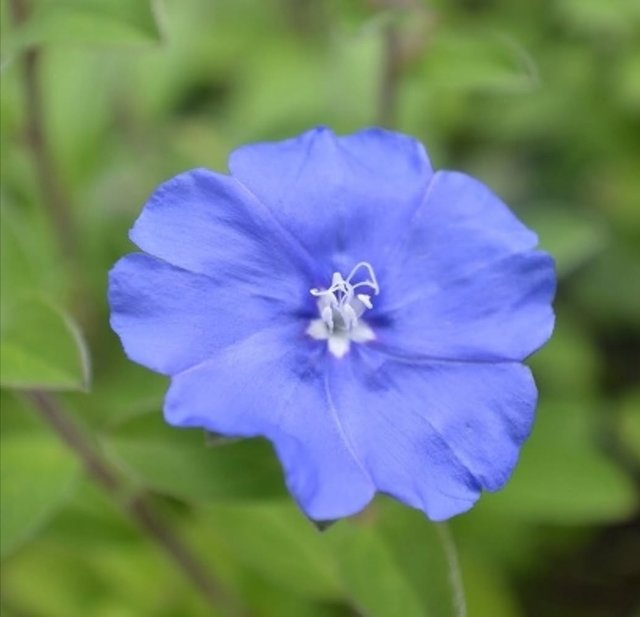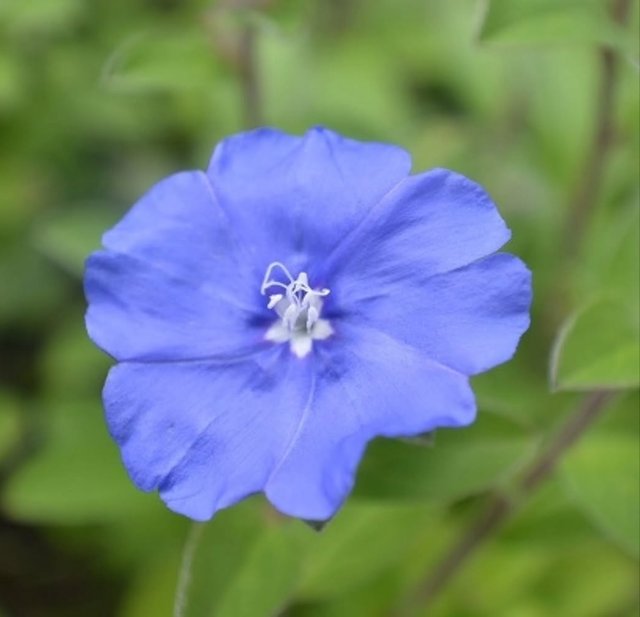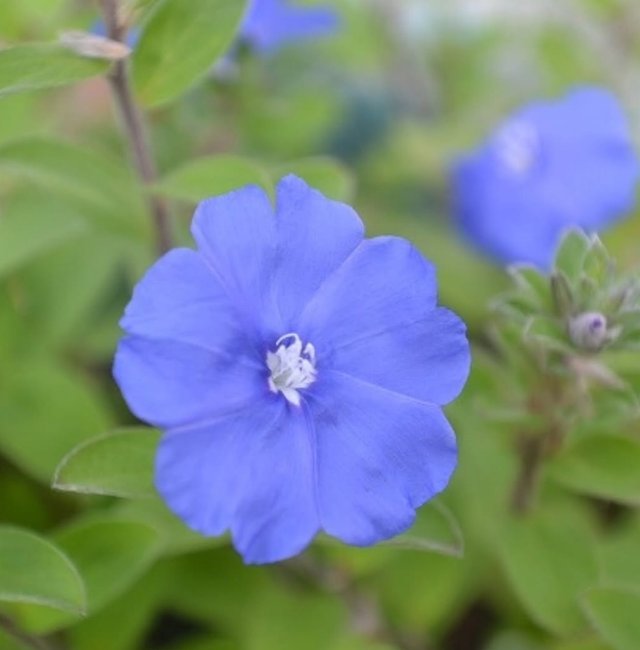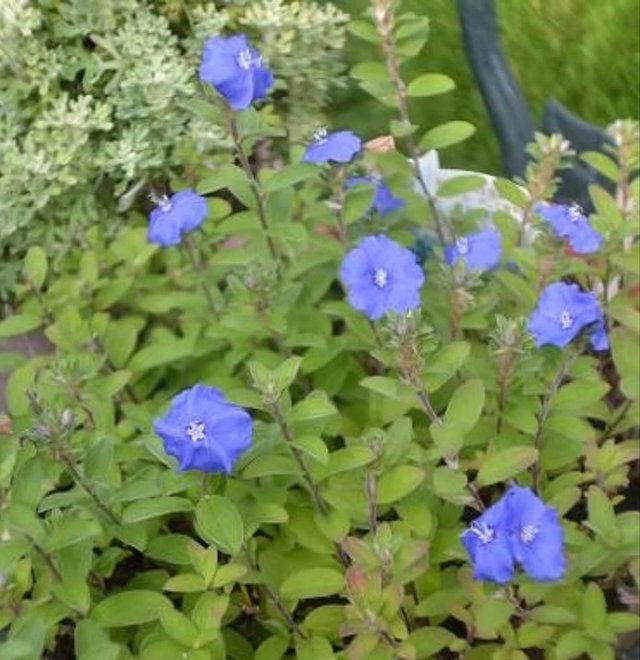Shaggy Dwarf Morning-Glory
Shaggy Dwarf Morning-Glory: A Tiny but Tenacious Wildflower
The Shaggy Dwarf Morning-Glory, sometimes called Nuttall’s Evolvulus, is a charming yet often-overlooked member of the morning-glory family . Unlike its showy climbing relatives that twine up trellises or fences, this species stays close to the ground, forming delicate mats or small clumps of greenery that brighten dry, open landscapes. Its diminutive size, shaggy foliage, and resilience make it a unique treasure among North America’s native wildflowers.
Botanical Characteristics
The Shaggy Dwarf Morning-Glory is a perennial or sometimes annual wildflower with a low-growing, sprawling habit—rarely exceeding 15 cm (6 inches) in height. Its stems are thin, slightly woody near the base, and covered with fine hairs that give the plant its “shaggy” appearance. The narrow, lance-shaped leaves are also softly hairy, helping the plant conserve moisture and withstand heat.
The blooms are what truly capture attention: small, funnel-shaped flowers of sky blue to violet, usually with a yellowish or white throat. Unlike many morning-glories that open and close dramatically within a single day, the flowers of Evolvulus nuttallianus tend to stay open for much of the day, especially in sunny weather. These blossoms are typically about 1–2 cm across, but their vivid color contrasts beautifully against dry grasses and sandy soil.
Native Range and Habitat
This species is native to central and southern parts of the United States, including Texas, Oklahoma, Kansas, and surrounding regions. It thrives in prairies, open woodlands, rocky slopes, and sandy soils. Because of its tolerance for drought and poor soil, the Shaggy Dwarf Morning-Glory is often found in places where more delicate plants might struggle. It is well-adapted to the arid and semi-arid environments of the Great Plains and is a key component of many native prairie ecosystems.
Ecological Importance
Despite its small size, Evolvulus nuttallianus plays an important role in its ecosystem. Its flowers attract native bees, butterflies, and other pollinators searching for nectar. Because it stays low to the ground, the plant also helps reduce soil erosion in fragile habitats. Its mat-forming growth can provide tiny shelter spaces for insects and small invertebrates.




%20(10).jpeg)